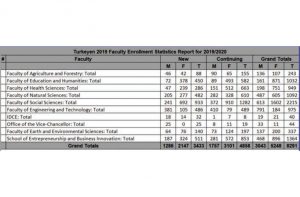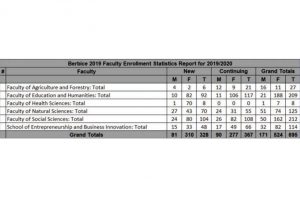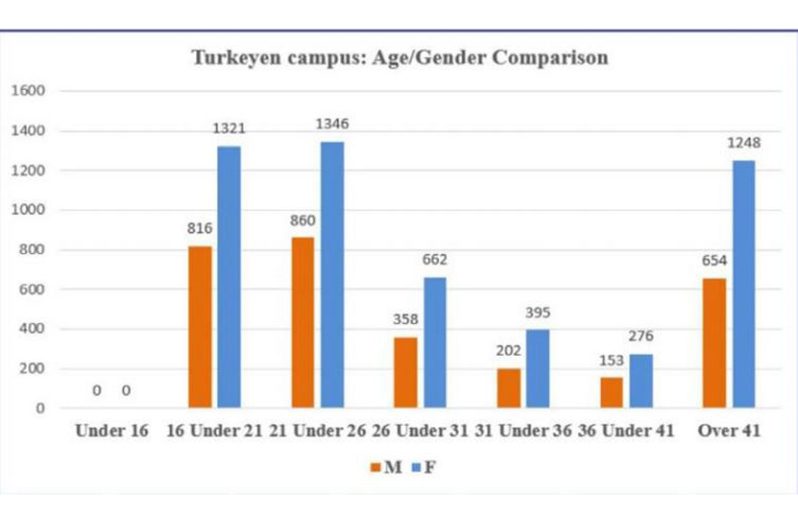–2019/2020 annual report reveals
IN keeping with a worldwide trend, females in Guyana continue to alarmingly outnumber males at the university level.
Staggering disparities can be seen at the University of Guyana (UG), across all its campuses and facilities.
The gap between the two genders increases as the statistics move outside of the Georgetown area, and the inequality persists even across varying age ranges, and new and continuing students.
In the university’s annual report for the 2019/2020 academic year, statistics reveal that of the 8291 individuals who were enrolled at the institution’s Turkeyen Campus, just 36.7 per cent are males.

The women outnumber the men in all of the faculties, except Agriculture and Forestry, and Engineering and Technology.
With 791 male students on roll, the Faculty of Engineering Technology is the most popular among the males, followed by the Faculty of Social Sciences, with 613 male students. However, males only account for 27.7 per cent of the students in the Fcaulty of Social Sciences, since the number of females is over 1600.
The Faculty of Social Sciences is the most populous at the Turkeyen Campus with 2215 persons enrolled. The Faculty of Entrepreneurship and Business Innovation follows with 1364 students, of which 34.3 per cent are males.

The Faculty of Natural Sciences comes in third, with a total of 1092 students, 44.6 per cent of whom are male.
In Engineering and Technology, men comprise 81.12 per cent of the student population; however, this is the only popular faculty where men are in the lead. In Agriculture and Forestry, which has a total enrollment of 243, males account for 56 per cent.
Additionally, the university’s Institute of Distance and Continuing Education (IDCE) programme has 40 males on roll, while the Faculty of Earth and Environmental Sciences has 337. Men comprise 47.5 per cent in the IDCE programme, and 40.7 per cent in the Earth and Environmental Sciences.
Of the overall enrollment at Turkeyen, 4858 were continuing, and 3433 were new students.
However, in both cases, females dominated, although the disparity was less among the new students than the continuing. Among the new students, there were 861 more females than males, while among the continuing students, there were 1344 more females than males.
When categorized, based on age range, again, women dominate each age range, with enrollment being highest for students aged 16 – 25, and those over 41.
For students aged 16 – 25 years, there are 2667 females to the 1676 males enrolled. There are almost twice as many females than males for the enrollment over 41 years.
The pattern is very similar at the University’s Berbice Campus. At the Berbice Campus, which offers programmes under five faculties, but does not include Faculty of Engineering and Technology, males only account for 24.6 per cent of the 695 students enrolled there. Here, the females outnumber the males in all faculties, except Agriculture and Agriculture, where men account for 59.3 per cent of the 27 students enrolled in that programme.
Again, Social Sciences is the most popular faculty, accounting for 212 students. According to the report, there are just 50 males in this faculty.
The second most populous faculty is the Faculty of Education and Humanities, which has a total of 209 students, inclusive of 21 males.
At the university’s five IDCE centres across the country, women consistently account for no less than 80 per cent of the student population. In the case of the centre at Anna Regina, on the Essequibo Coast, all but one of the 80 students there are female.
The IDCE centres are in Georgetown, Bartica, Berbice, Linden and Anna Regina. The greatest disparity is present in Georgetown, where there are 322 more women than men.




.png)









